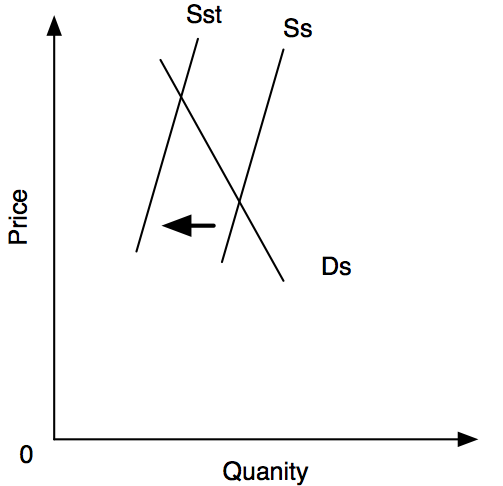Having outlined the theory of supply and demand in the software market I want to spend this, and the next few posts examining what this analysis can teach us. I’m starting with the supply curve and will look at the demand curve later.
First I want to consider what happens to a software system over time if nothing else is done. (Consider this as a small detour before we consider Agile.)
Over time changes to software systems will add code, this means there is more code to maintain, more code for engineers to understand, more code for testers to test. Internally code quality tends to decay, some people call it software entropy.
Engineers leave the team and new engineers (might) arrive thereby loosing knowledge of how the system works. At least the knowledge is diluted. And if maintenance is outsourced or offshore such knowledge may be destroyed altogether. The new, cheaper, outsourced developers need to relearn.
Meanwhile the business environment seldom becomes any simpler. New business rules get added one place or another - increasing complexity. New systems need to be connected - either as data sources or destinations - which again increase complexity.
This all gives rise to the Big Ball of Mud pattern.
Finally technology changes. The operating system and databases which form the foundations of the system may be upgraded or replaced. In the worse cases the language the system is written in dies.
The net result of all of this is that the system becomes harder to maintain. Harder translates to more time and more time translates to more money. Thus the system becomes more expensive to maintain. Consequently the supply curve for the system moves to the left. For the same price we can now get less software.
Consider the graph below. We have the Supply of Software (Ss) and Demand for Software (Ds) curves as before. Now we add the Supply of Software over Time (Sst) curve. Over time, of nothing is done, the curve itself moves, all other things being equal we do not move to a new position on the curve. We get an entirely new curve.

Now it is possible to fight against this trend. And certainly there are plenty of tool vendors out there who will happily sell you a tools which they claim will move the curve in the opposite direction. (In economics terms we break the “all other things being equal” assumption.”)
But either way: unless you fight it things will get more expensive for the same quantity of software - or you get less software for the same money.
No comments:
Post a Comment
Note: only a member of this blog may post a comment.